The area of the three martyrs (Piazza Tre Martiri) is one of the central squares of the historic center of Rimini. Moreover, it is one of the two most important squares of the city, the second - Piazza Cavour.
Piazza Tre Martiri is situated the Roman forum, where his legions were Julius Caesar.
The history of the square dates back to 200 years BC. In the middle ages the area was known as "piazza delle Erbe" and was the site of the market, as well as knightly tournaments. Throughout its history, the square has changed several names, including named and area of Julius Caesar. Named "Tre Martiri", which translated from Italian means Three of the Martyr, the area received only after the Second world war, as a reminder of the murder of three young partisans who were executed in this square on August 16, 1944 (Mario Cappelli, Luigi Nicolò, Adelio Pagliarani).
Located three Martyrs square in the center of Rimini, on the main road Augusto - street Corso d Augusto, connecting the arch of August from the bridge of Tiberius and conventionally, the cutting of the old town of Rimini into two parts - East and West.
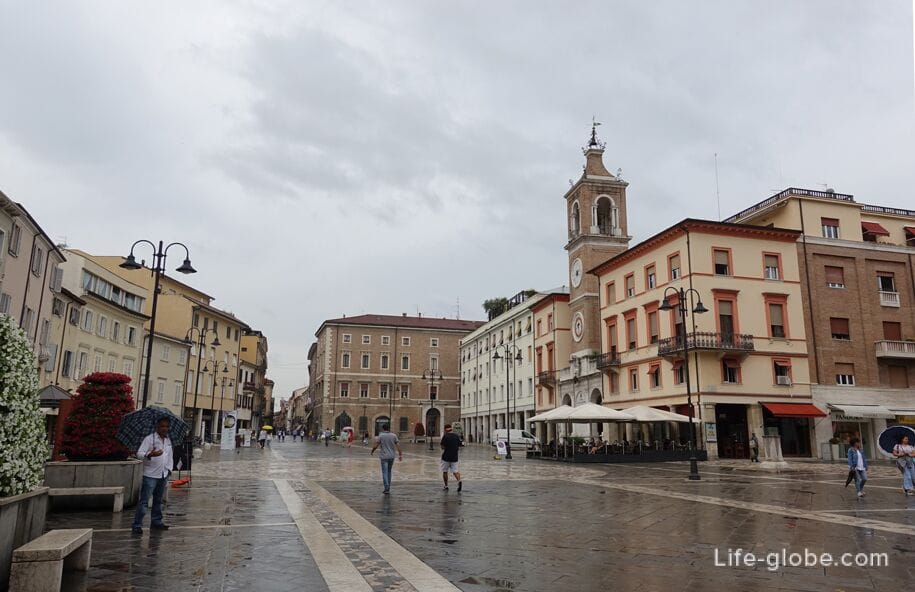
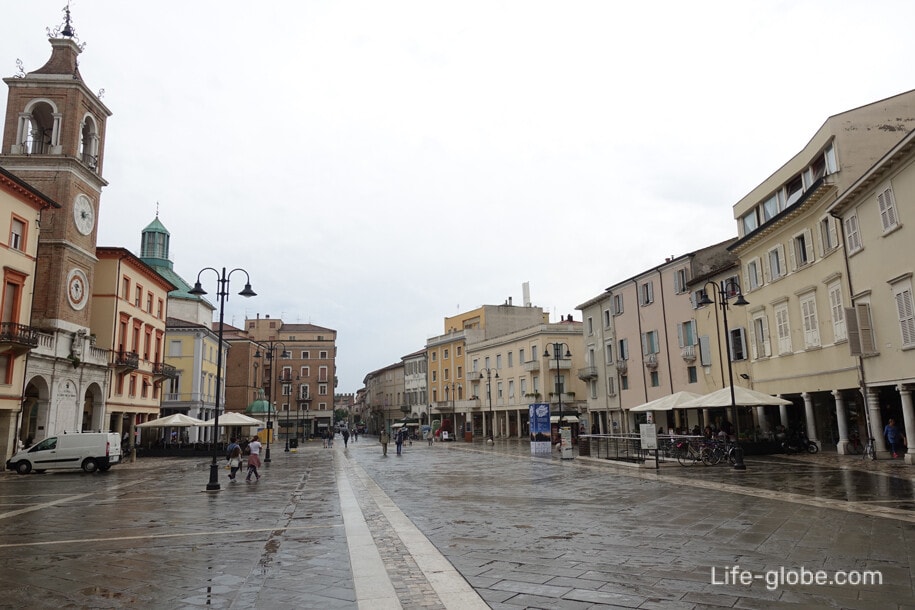
Sights Piazza tre Martiri in Rimini
In addition to its history and location, the area is attractive and interesting sites are concentrated, as on the square itself and around it.
Brioli Palace and the clock Tower
Brioli Palazzo is a historic 17th-century building, the centre of which is adorned with a high clock tower of the 16th century. Clock tower made of bricks and decorated with wrought iron elements and the astrological clock, immediately catches the eye, and, perhaps, is the main symbol of the square Tre Martiri.

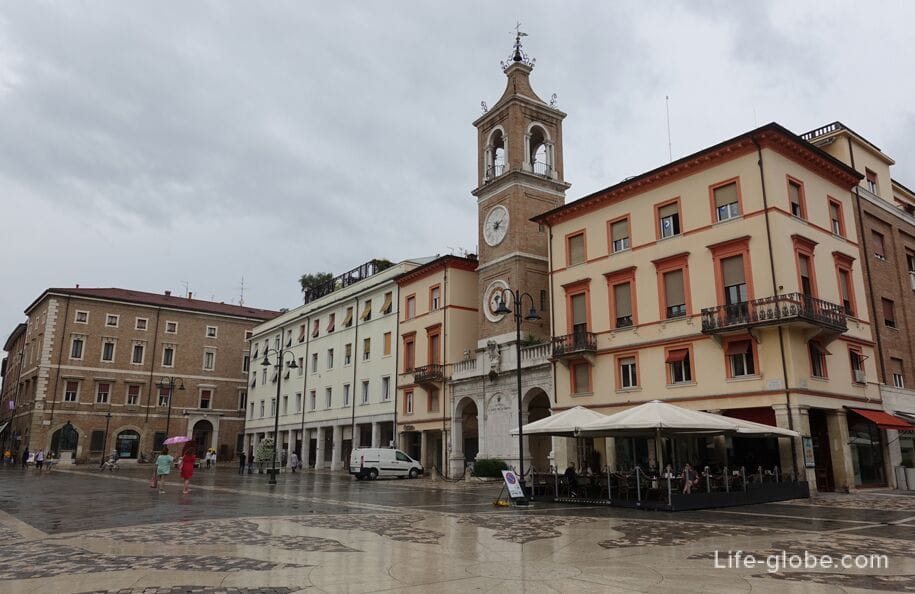
The temple complex of Sant Antonio
A small octagonal chapel of Sant'Antonio (Tempietto di Sant'Antonio) was built in the 16th century, and after the earthquake of 1672, rebuilt in the Baroque style.
The chapel adjoins the Church of San Francesco dei Paoletti or St. Francis of Paolo (Chiesa Dei Paolotti) and echoed more the Sanctuary of Sant'Antonio. Together, the chapel and the Church form a single ensemble and harmoniously fit into the overall picture Piazza Tre Martiri.
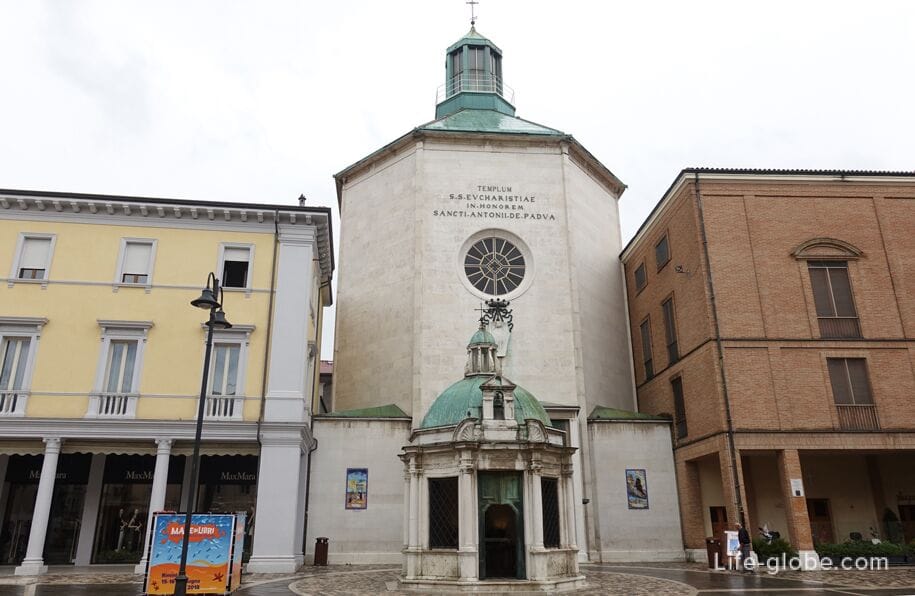
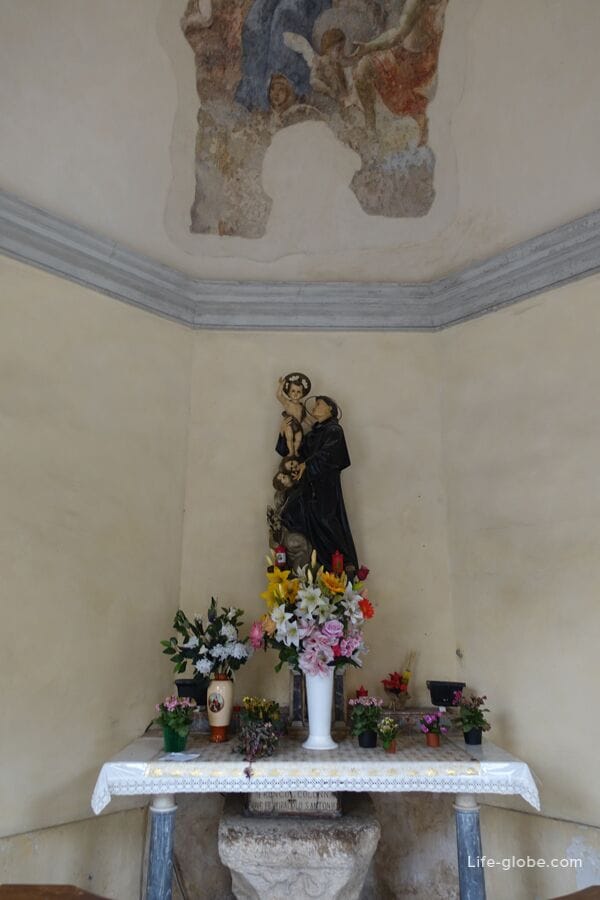
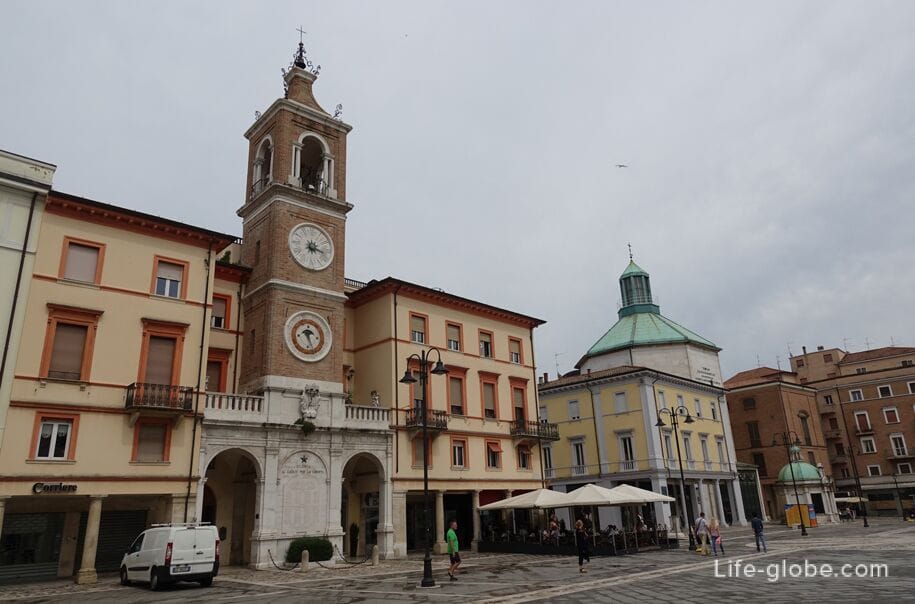
The Monument To Caesar
On the North side of the square is the bronze monument of the Roman General and the policy of Julius Caesar (Statua di Giulio Cesare).
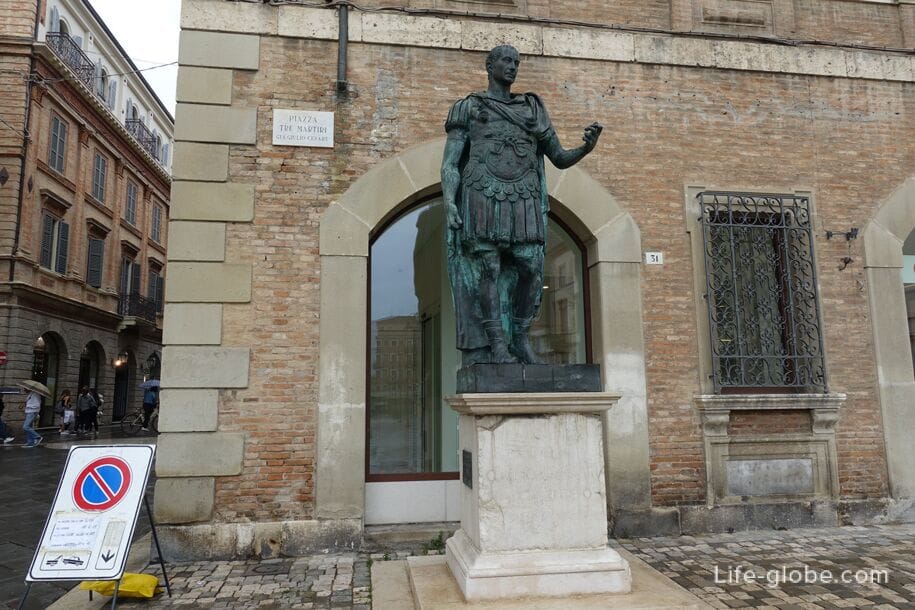
Column Of Julius Caesar
Between the clock tower and the temple is a small and seemingly inconspicuous Pole or Column of Julius Caesar (La colonna di Giulio Cesare). The column is a memorial of the Renaissance, located on the Eastern side of Piazza Tre Martiri, built in 1555 to commemorate the place from which Julius Caesar spoke to the soldiers of the XIII Legion, after the passage of the Rubicon. Over the column, until the Second world war, was "Petron", which raised Caesar to speak their own language.

Historical excavations
In the Central Piazza Tre Martiri, and the column of Julius Caesar (Via IV Novembre) are the sites of historical excavation, indicating the presence in this place of the ancient forum and the churches.
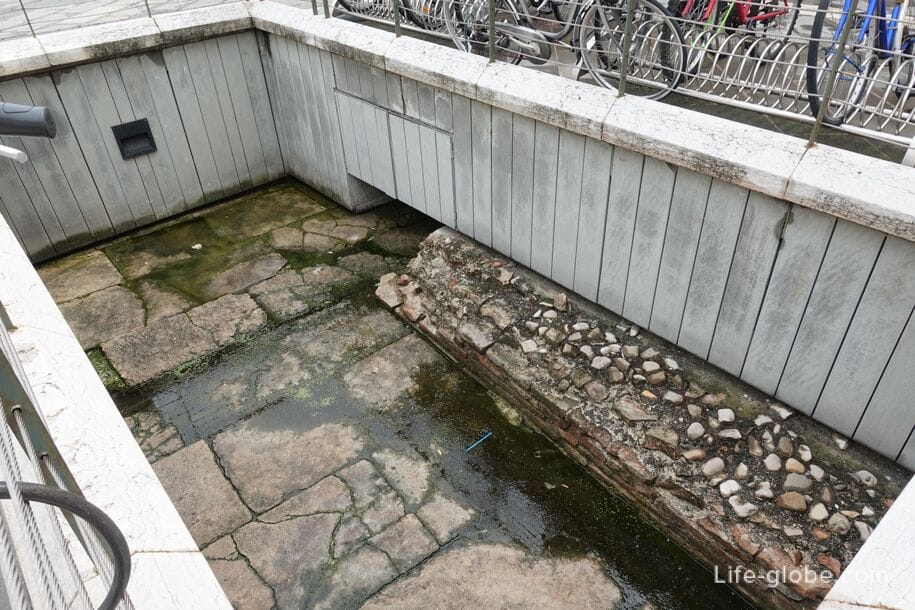
The excavations, located behind a column of Julius Caesar that belongs to churches of Sant Innocenza and San Michelino in Foro. Currently, only part of the remains of the apse of one of the churches indicate changes of the area in the process of the construction works taking place for centuries.
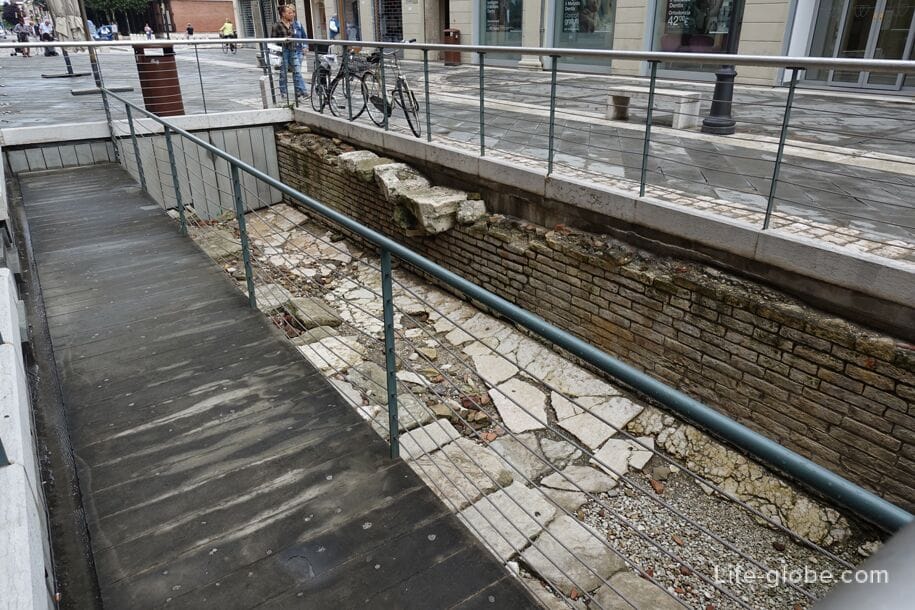
Cathedral of Rimini - Tempio Malatestiano
Near the square the via IV Novembre is the Malatestiano temple (Tempio Malatestiano), which is sometimes also referred to as the attractions of Piazza Tre Martiri.
Tempio Malatestiano is the Cathedral of Rimini, built in the mid XV century by the architect Alberti as a tomb for the ruling Malatesta, hence the name of the temple. Officially the Cathedral is named after St. Francis, but this name is unpopular among tourists and locals.
San Francesco was originally a Gothic Church of the thirteenth century, belonging to the Franciscans. The original Church had a rectangular plan, without side chapels, with a single nave ending in three apses. Malatesta called on Alberti to transform the building and make it a kind of personal mausoleum for himself and his family.
The marble façade of the Cathedral is decorated with a sculptural composition that catches the eye and is what sets the Church against other churches and, in General, buildings located in the historical part of Rimini.
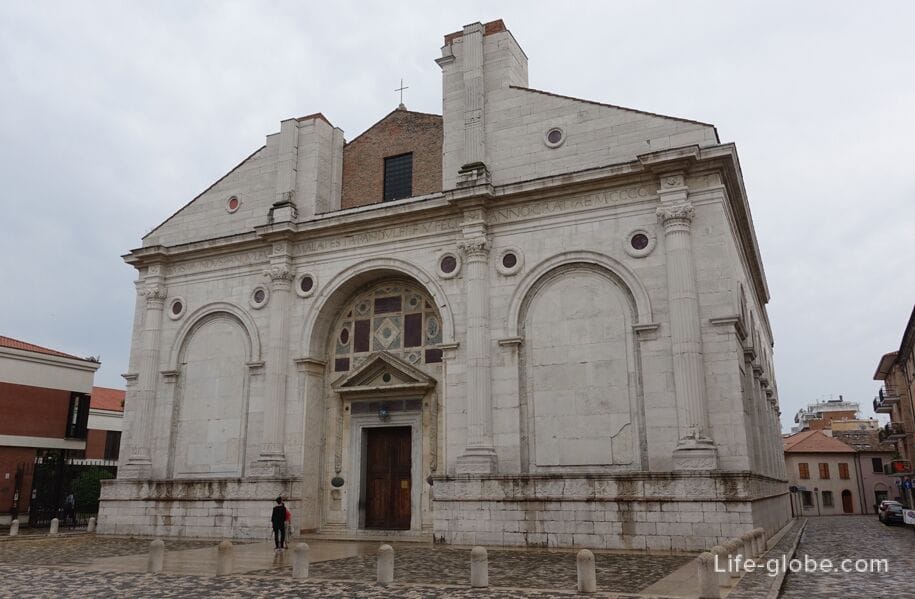
All accommodation facilities in Rimini, from budget to luxury, you can view and book here








